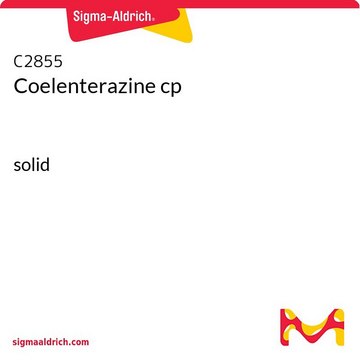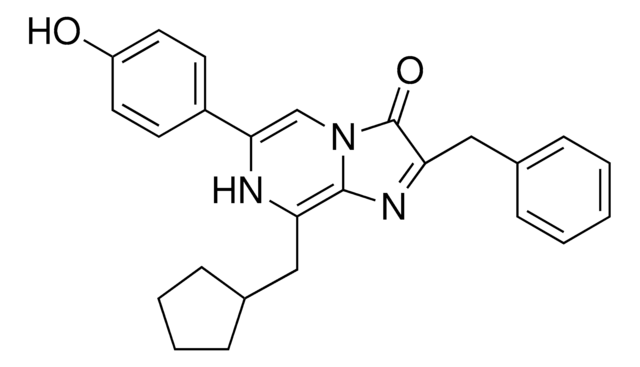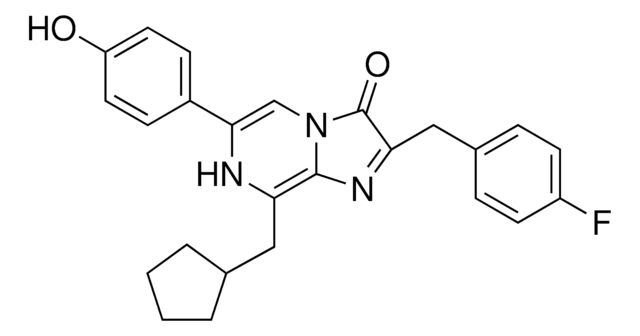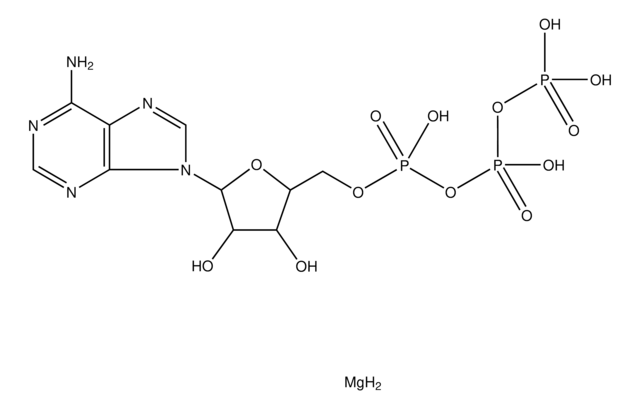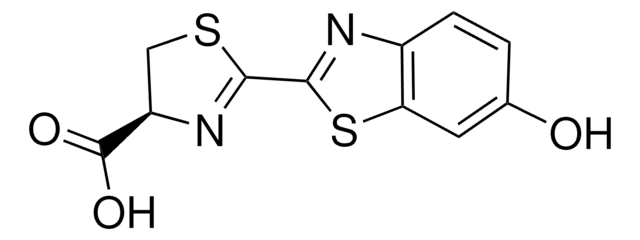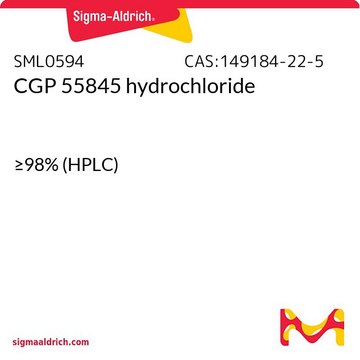C3230
Coelenterazine h
solid
Synonym(s):
2-Deoxycoelenterazine, CLZN-h
Sign Into View Organizational & Contract Pricing
All Photos(1)
About This Item
Empirical Formula (Hill Notation):
C26H21N3O2
CAS Number:
Molecular Weight:
407.46
MDL number:
UNSPSC Code:
12352200
PubChem Substance ID:
NACRES:
NA.32
Recommended Products
form
solid
Quality Level
storage temp.
−20°C
SMILES string
Oc1ccc(cc1)C2=CN3C(=O)C(Cc4ccccc4)=NC3=C(Cc5ccccc5)N2
InChI
1S/C26H21N3O2/c30-21-13-11-20(12-14-21)24-17-29-25(22(27-24)15-18-7-3-1-4-8-18)28-23(26(29)31)16-19-9-5-2-6-10-19/h1-14,17,27,30H,15-16H2
InChI key
KAEGGIFPLJZUOZ-UHFFFAOYSA-N
General description
Coelenterazine is an imidazopyrazinone derivative. It is a substrate for bioluminescence in many luminous marine organisms.
Biochem/physiol Actions
10 times higher luminescence intensity than native coelenterazine.
Signal Word
Warning
Hazard Statements
Precautionary Statements
Hazard Classifications
Eye Irrit. 2 - Skin Irrit. 2 - STOT SE 3
Target Organs
Respiratory system
Storage Class Code
11 - Combustible Solids
WGK
WGK 3
Flash Point(F)
Not applicable
Flash Point(C)
Not applicable
Personal Protective Equipment
dust mask type N95 (US), Eyeshields, Gloves
Choose from one of the most recent versions:
Already Own This Product?
Find documentation for the products that you have recently purchased in the Document Library.
Coelenterazine-dependent luciferases
Markova S V and Vysotski E S
Biochemistry (Moscow), 80(6), 714-732 (2015)
Yifan Zhang et al.
Scientific reports, 7(1), 7195-7195 (2017-08-05)
Epilepsy is a chronic brain disorder characterized by recurrent seizures due to abnormal, excessive and synchronous neuronal activities in the brain. It affects approximately 65 million people worldwide, one third of which are still estimated to suffer from refractory seizures.
Eva A Naumann et al.
Nature neuroscience, 13(4), 513-520 (2010-03-23)
Existing techniques for monitoring neural activity in awake, freely behaving vertebrates are invasive and difficult to target to genetically identified neurons. We used bioluminescence to non-invasively monitor the activity of genetically specified neurons in freely behaving zebrafish. Transgenic fish with
Md Alamgir Hossain et al.
Cell reports, 29(7), 1934-1945 (2019-11-14)
To evade immunity, many viruses express interferon antagonists that target STAT transcription factors as a major component of pathogenesis. Because of a lack of direct structural data, these interfaces are poorly understood. We report the structural analysis of full-length STAT1
Péter Sok et al.
Structure (London, England : 1993), 28(10), 1101-1113 (2020-07-11)
Mitogen-activated protein kinases (MAPKs) control essential eukaryotic signaling pathways. While much has been learned about MAPK activation, much less is known about substrate recruitment and specificity. MAPK substrates may be other kinases that are crucial to promote a further diversification
Our team of scientists has experience in all areas of research including Life Science, Material Science, Chemical Synthesis, Chromatography, Analytical and many others.
Contact Technical Service